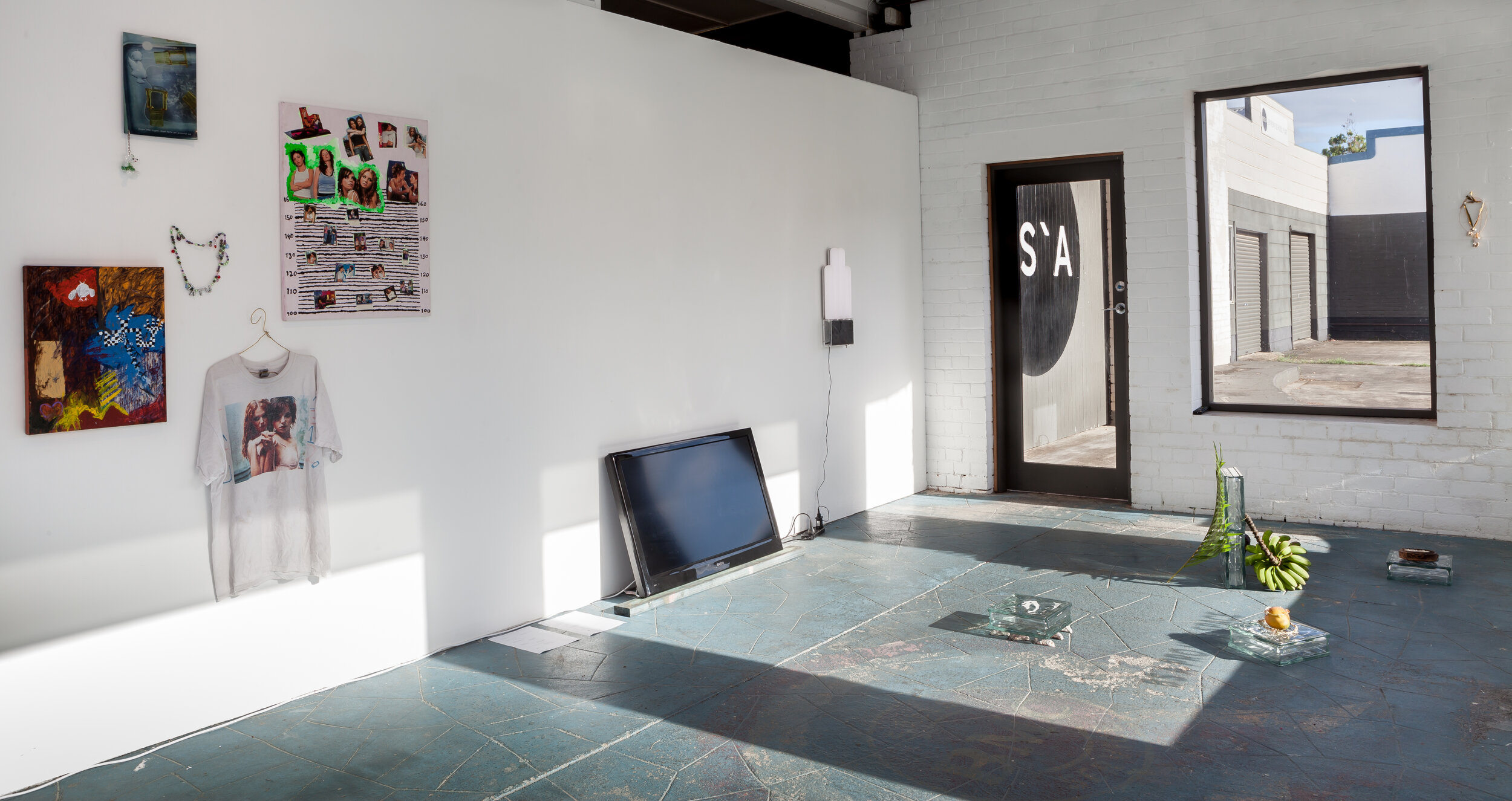such structures might not be predeterminable
Byron School of Art, Bundjalung nation, 2021
Jemi Gale & Jackie De Lacy, Laura Hunt, Jay Jermyn, Anastasia Klose, Mashara Wachjudy
Curated by Marian Tubbs
This exhibition addresses ‘instability’ as a method of making and allows the work of six artists to intersect via exhibition and event. A static series of disciplinary descriptions; mark maker (Anastasia Klose); sculptor (Jay Jermyn); poet and chef (Mashara Wachjudy); painters (Jemi Gale and Jackie De Lacy); and sound artist (Laura Hunt) does not suffice, rather the exhibition is an expression of how these practices may unfold together.
Their politics stem from queer generosities and serve one another and their audience in such spirit. Gale and De Lacy’s installation of paintings, hand-made jewellery, and a band t-shirt on a custom hanger presents a shrine-like visitation to the enduring influence of teen Russian political pop- rock duo t.A.T.u. Literally translating as “this [girl] loves that [girl]” t.A.T.u, became known for statements on war; they continually fought censorship and received negative critique for promoting teen lesbianism. This collaboration is new for the artists, just finishing studies in different cities and it is complimented by a poem they have asked me to place somewhere near their work., I met Laura Hunt when we both had DJ sets out the back of a defunct cinema in Hobart for an arts festival in 2018. Different to my selection of trap-rap, and banger girl hip-hop mixed with field recordings, Hunt’s performance was actually art. Shrouded in a glowing blue veil, she moved abstractly across machines glowing with hums, it was grace in operation. Hunt’s video, ‘When the portal spirals you can choose where you wanna go,’ (2021) is effortlessly elusive and mesmerising. Having spent half of 2020 living and working on permaculture farms across the Northern Rivers, her new work reflects on fecund nature and ‘health’ as a creative form. Jay Jermyn’s work I saw last year in a prize exhibition in Ballina, the sleek assemblage of materials spoke to peak industrial design, echoing rhetorics of Michael Fried’s sentiments on the performativity of minimalism. But there were other factors, there was a genuine sense of wonder put toward these materials by the artist; crystals, lights, and embedded moving images, the earnestness of the work sung, not as corny but something else I couldn’t name. It was the evidence of the artist playing as he made the work. Mashara Wachjudy, too, plays; her gestures are not fixed, her installation shifts as the mangoes and flowers turn. The time-based work is centred on gifts and natural arrangements, replenished during the course of the exhibition with mysterious timings for tea and sharing. Anastasia Klose, a master draftsperson, layers her work with insight—personal, political and topical. Klose constantly questions what it is to make art in the difficult climate/s of the 21st century, and what art’s purpose and form should be. Her piece ‘Poster for Centrelink’ is an auto portrait for now and for the artist. Her colouring and mark making is at once desperate and seriously joyful. ‘such structures might not be predeterminable’ is a phrase from Adorno’s ‘Culture Industry,’ this typical poetic reservation as statement assists me in working out the dialectics encompassed in these works. As the organiser of this exhibition I was attracted to the complexities of vulnerable and collaborative forms of art practice.
Marian Tubbs
Images: Michelle Eabry





